SoHo Commoning
Community Management Trust
SoHo Commoning Community Management Trust

Location SoHo, New York City
Instructor Angela Co
Collaborator Angelina Zhang, Susana Quintero Vidales
Award Honorable Mention / NonArchitecture Community 2050 (Open Category)
Click here to watch full presentation video.
This project proposes a new urban strategy that internalizes the vibrancy of New York’s dense urbanity into a vertical configuration that creates new modes of live-work indicative of the history of SoHo. 2 prototype towers explore possible envelopes of ‘semi-pubic’ communing by arranging modules that facilitate ad-hoc Right to the City around continuous surfaces or vertical courtyards. Programmatic particalization as well as the introduction of a Community Management Trust seek to create resilient micro-communities that perpetuate opportunities for upward socio-economic mobility for the densifying residential demographic. The goal of this project is to speculate on new modes of living that is interdisciplinary and responds to the immediate challenge of NYCDCP’s rezoning proposal as well as addressing real-estate pragmatism by researching demographics, studying market behavior, and producing an accompanying proforma.
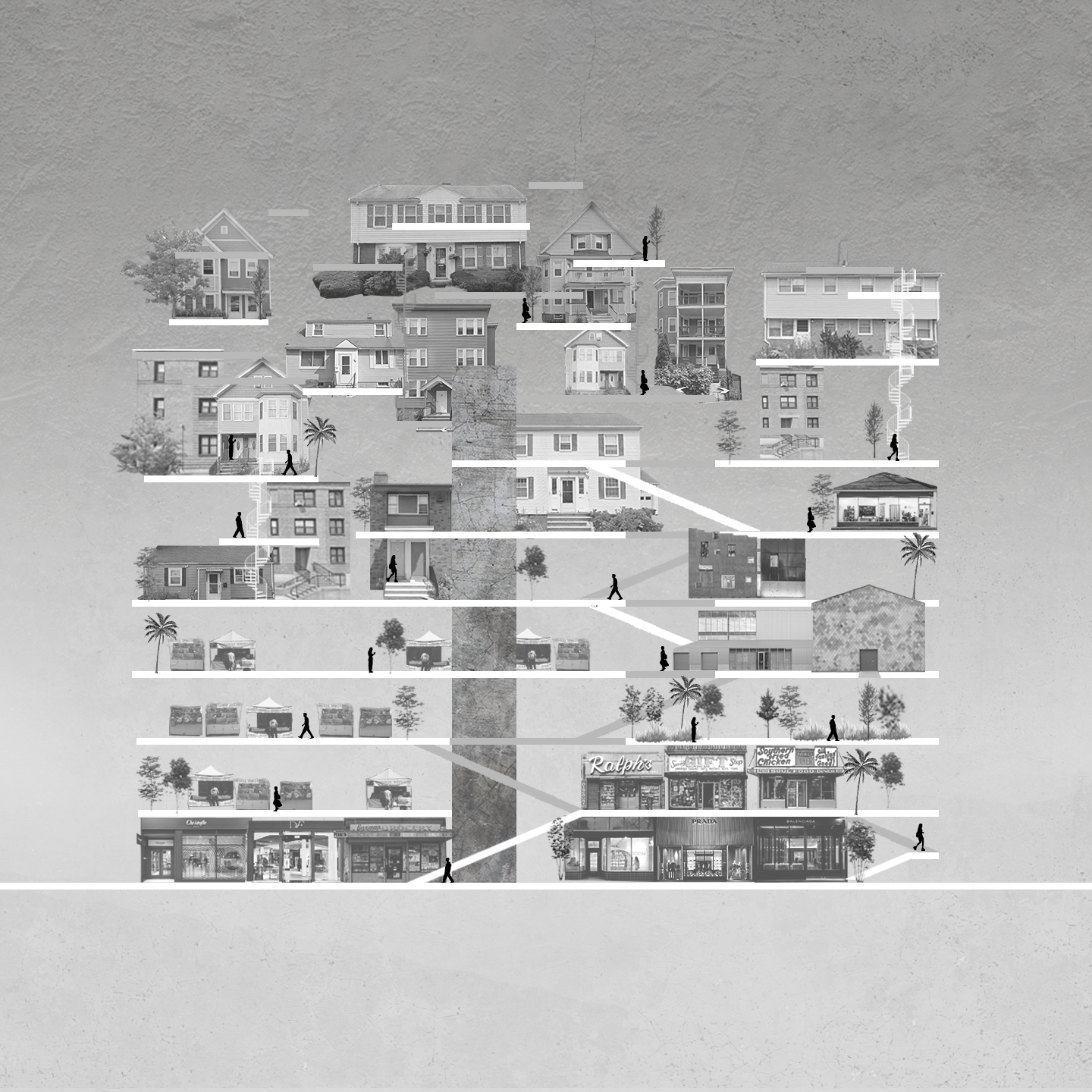
The Continuous Vertical Street

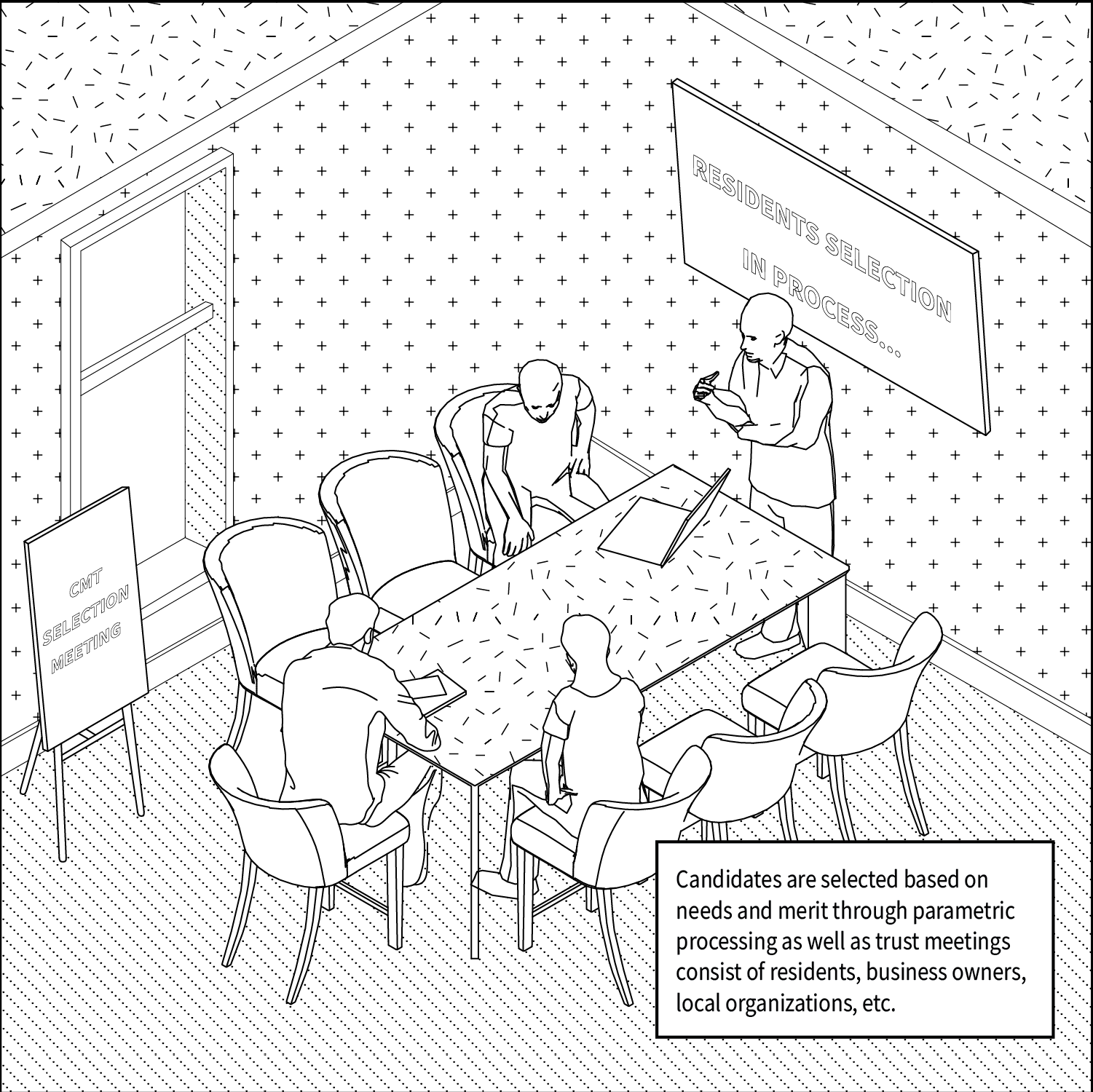
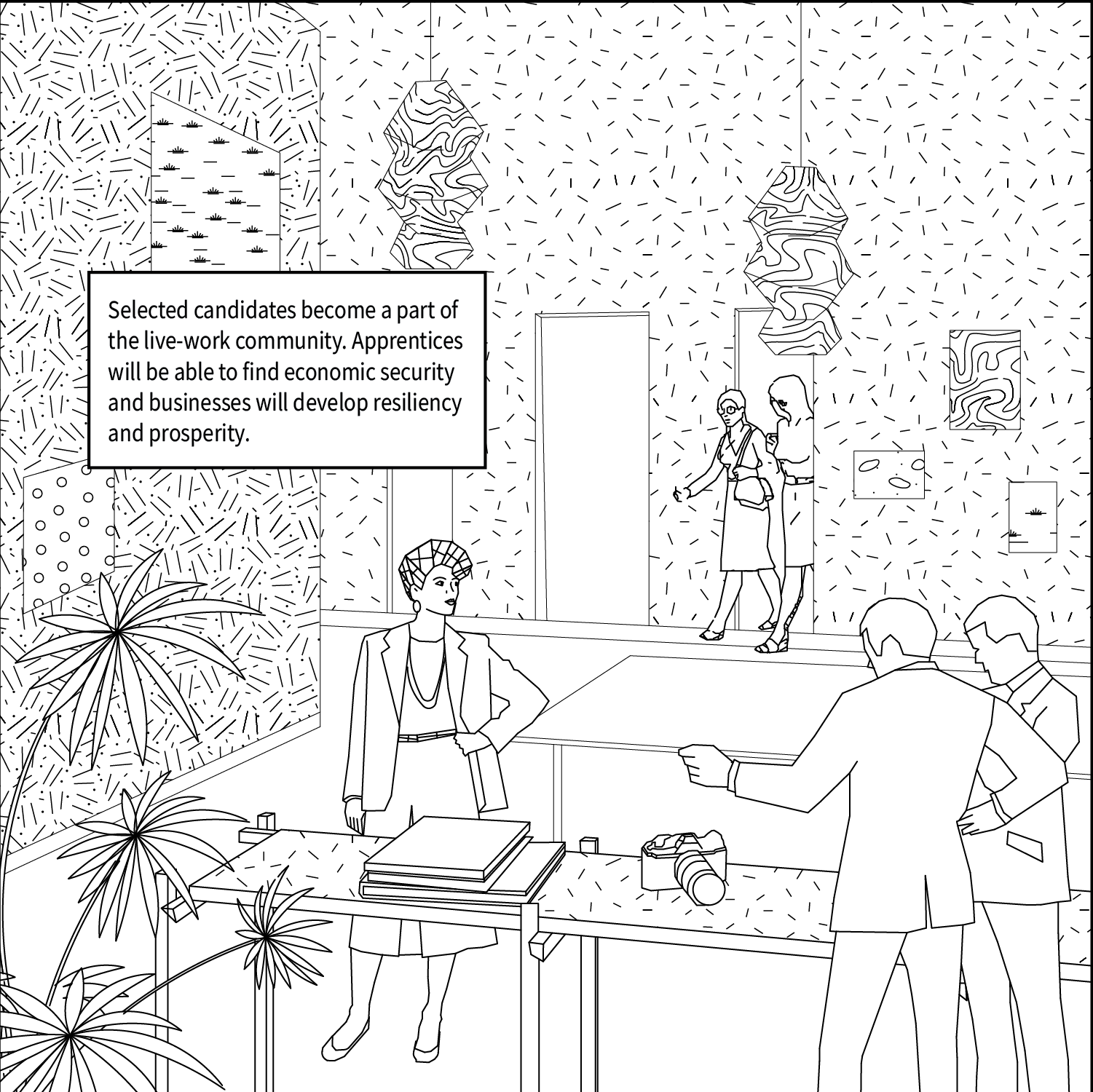
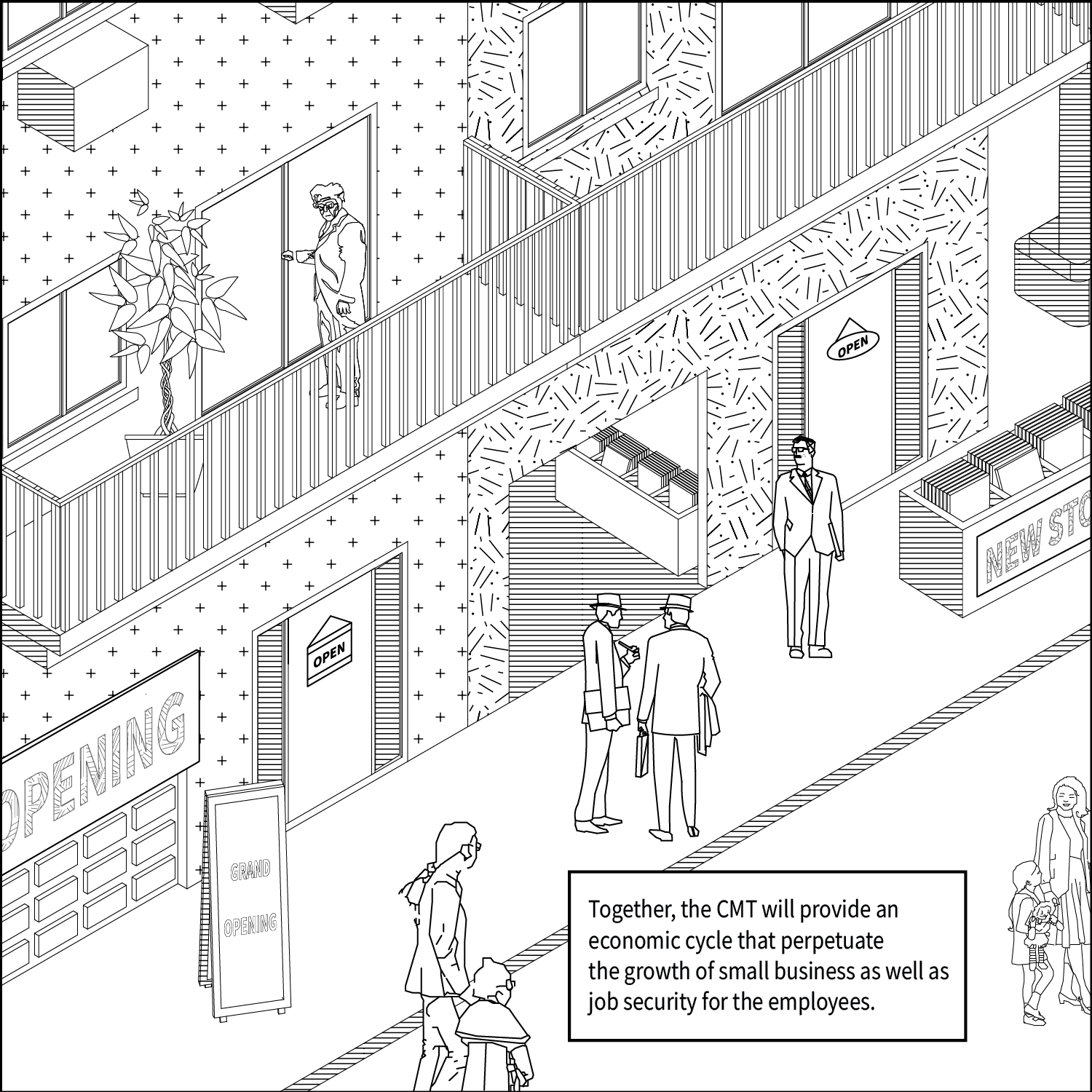
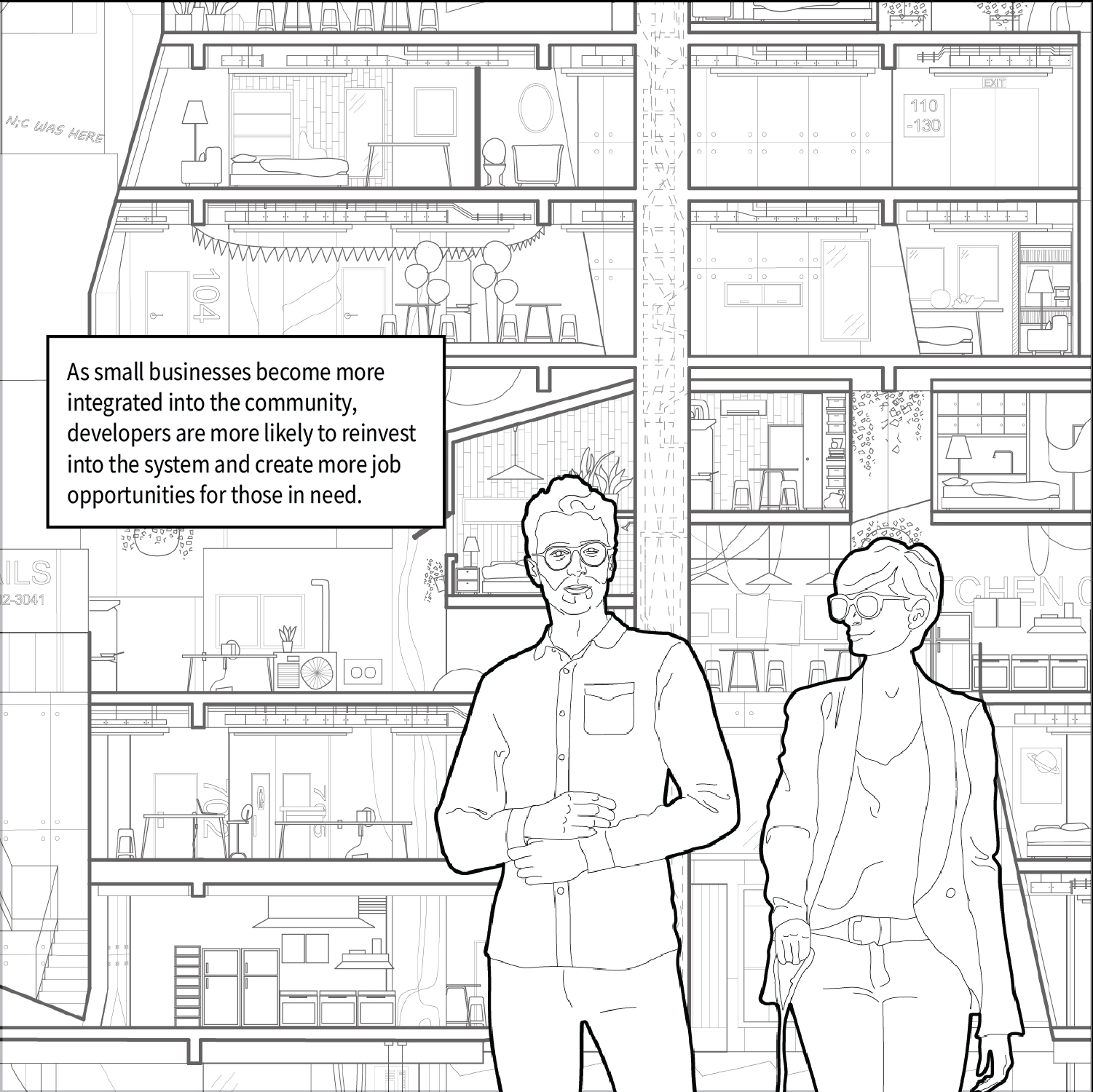

Community Buidling < slide >

Performance-Based Zoning
Derived from the management trust scheme are three main program categories, Residential, Commons, and Commercial. The habitus we imagine aims to build mutual dependency between stakeholders in the community. Residents either become apprentices in the businesses that move in // or work with the management trust as stewards of the community. Businesses will also be provided with public-facing commercial areas that help them build rapport and support the operating budget of the CMT. These programs are decentralized and highly flexible in composition and configuration, encouraging interpretive use and constant reshuffling. The organization of this internet of programs and relationships consolidates the techtonics of right to the city by normalizing ad hoc moments of destabilization.
![]()
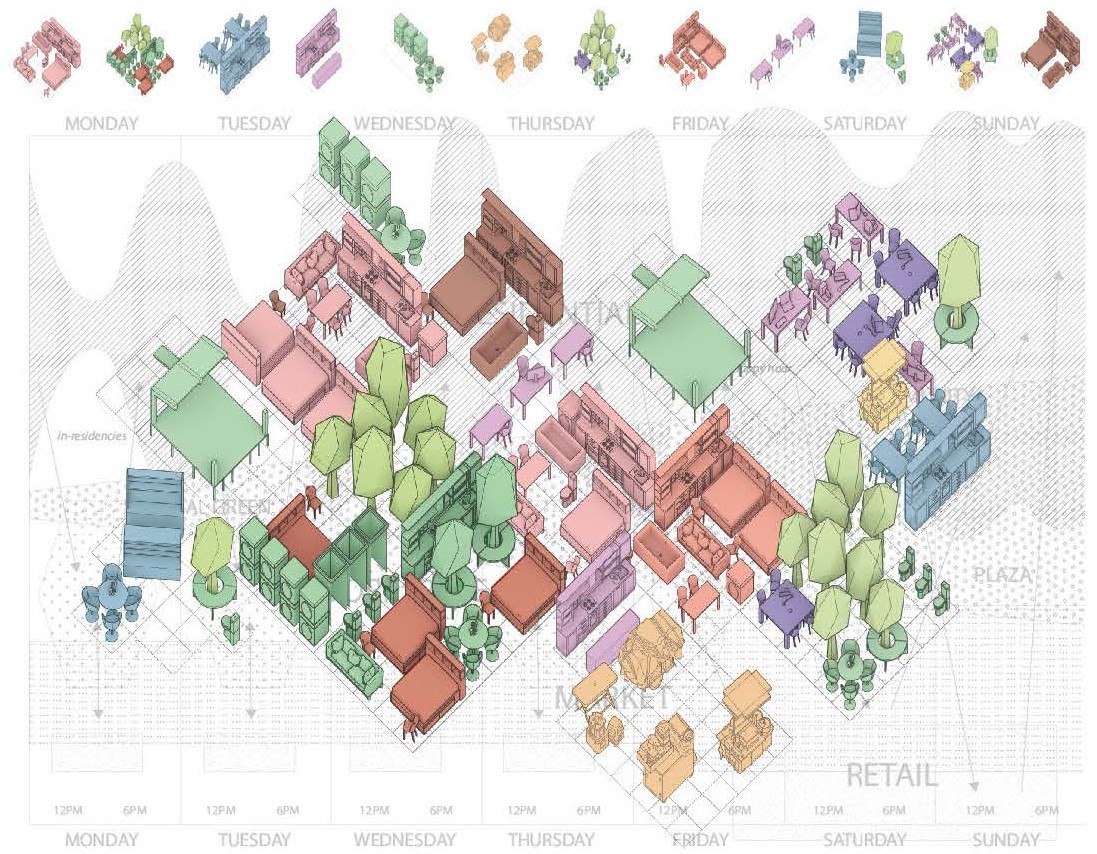
Macro Modular Configurations based on Use and Occupancy
Concurrent to the design of a new pilot community framework was research surrounding the premise that there is a discrepancy between what is public and what is conventionally called “the public”, which unravels into a series of questions pertaining to ownership, collectivity, and material/cultural practices of inclusion or exclusion. The seminar began with interpreting the readings of Henri Lefebvre, David Harvey, Jane Jacobs, and Stavros Stavrides. The general understanding is that spaces with a public presence should be constantly self-reiterative as sites and stakes of struggle. Conventional ‘public’ spaces have a tendency to deliniate who its users are, thereby privitizing common resources. The research also includes compiling techtoncis of enforcement and ownership, or the illusion of such consolidation. The final compendium includes deep dives into 5 spaces - POPS, The High Line, Ad Hoc Markets, Sesc Pompeia, and Brasilia.
Click here to read the full compendium.
Click here to read the full compendium.

Right to the City Issues Seminar
We propose a public-private collaboration, titled the community management trust, that owns the exclusive management rights of properties via deed covenants, and comprises local residents, partners, and city representatives. They work to activate public spaces and programs as interconnecting tissues between properties. The goals of which are firstly the creation of a continuous commons that extends across the urban fabric, activating right to the city. We also propose an in residency program for small business owners priced out of Soho, who will take on apprentices residing in the community, enabling them to move up the socioeconomic ladder.
Individual modules allow for privacy whilst keeping eyes on the street by maintaining visual engagement with the happenings of communal spaces. These communal spaces act as platforms or landscapes for social exchange, the reproduction of culture, and constructive friction. They also act as shared work spaces for local business owners and apprentices, where new interdisciplinary approaches to live-work emerge. This connective tissue extends onto the street, where the community management trust can begin to bridge different properties and micro communities together through open streets or neighborhood events.



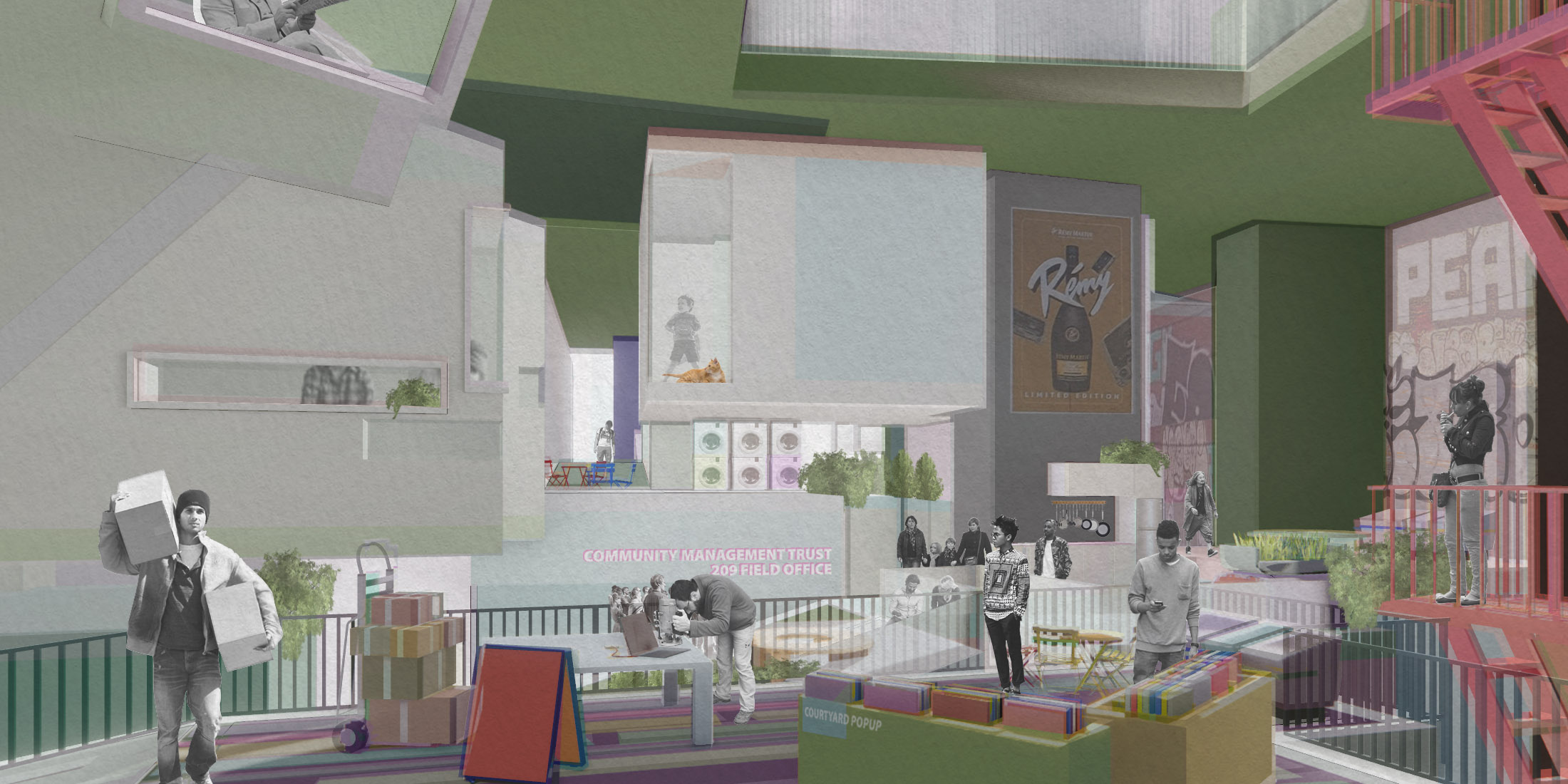

Prototype Live-Work Vertical Communites on Canal Street, New York < slide >

© 2023 Tsz Man Nicholas Chung / all rights reserved

